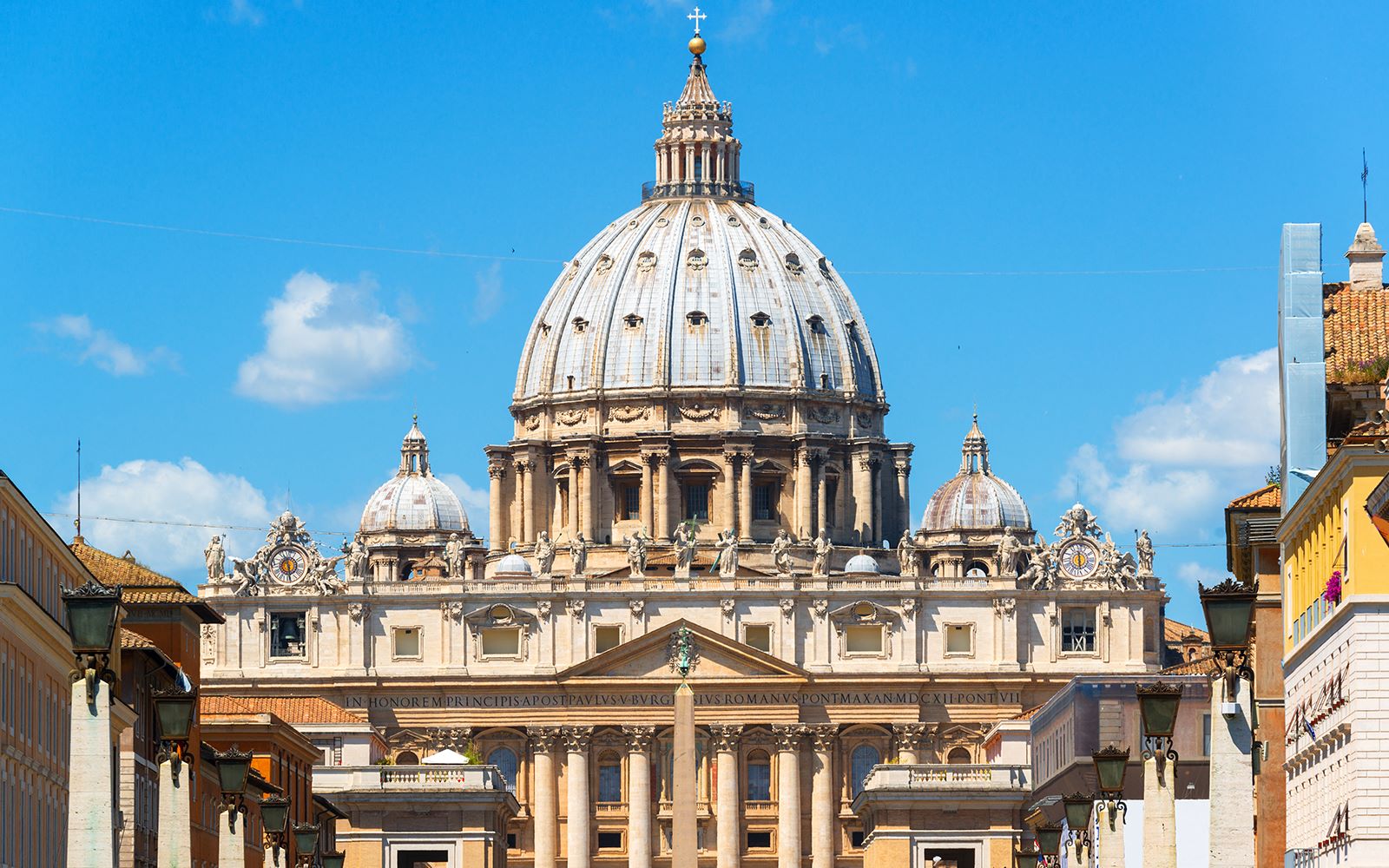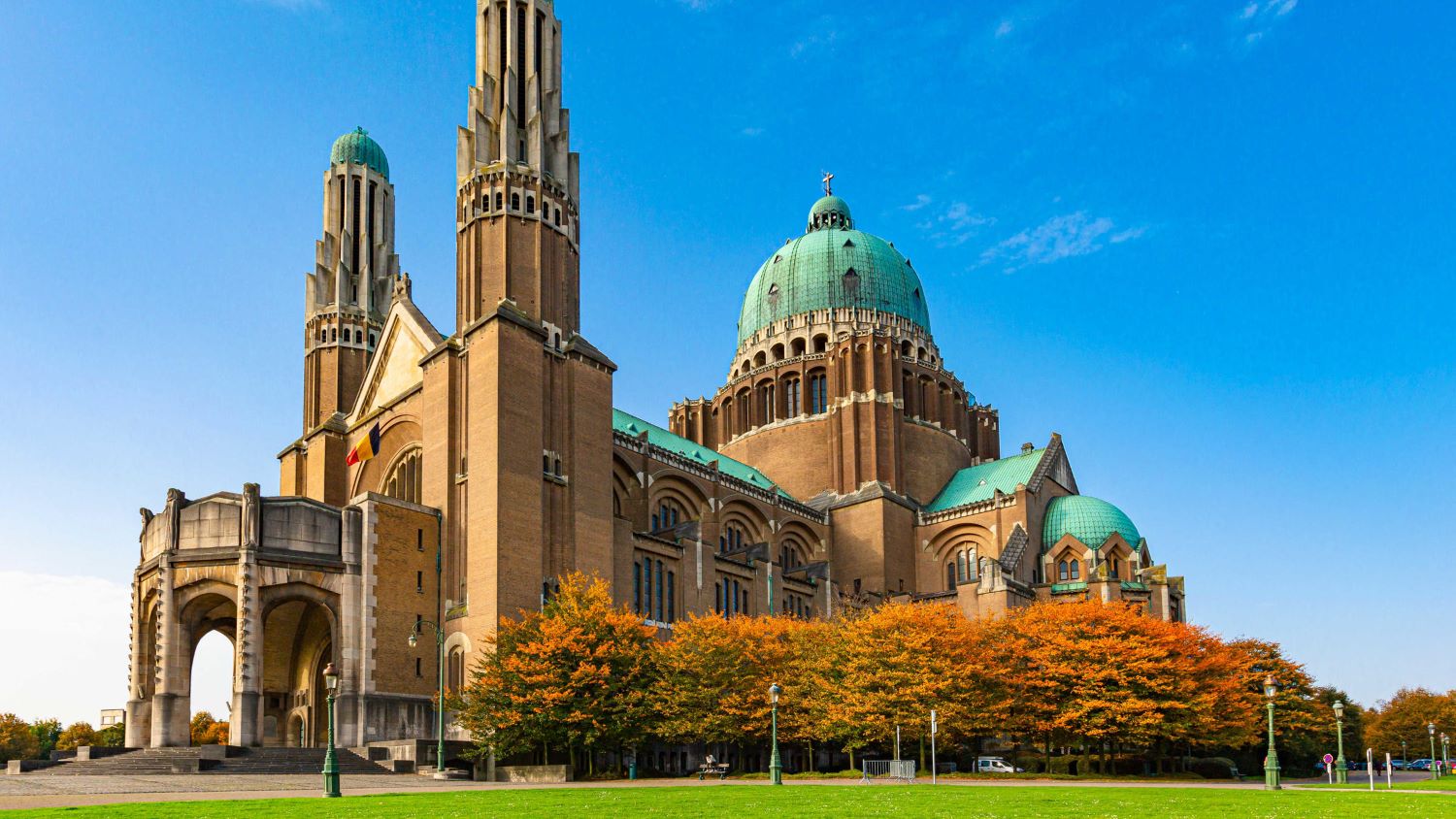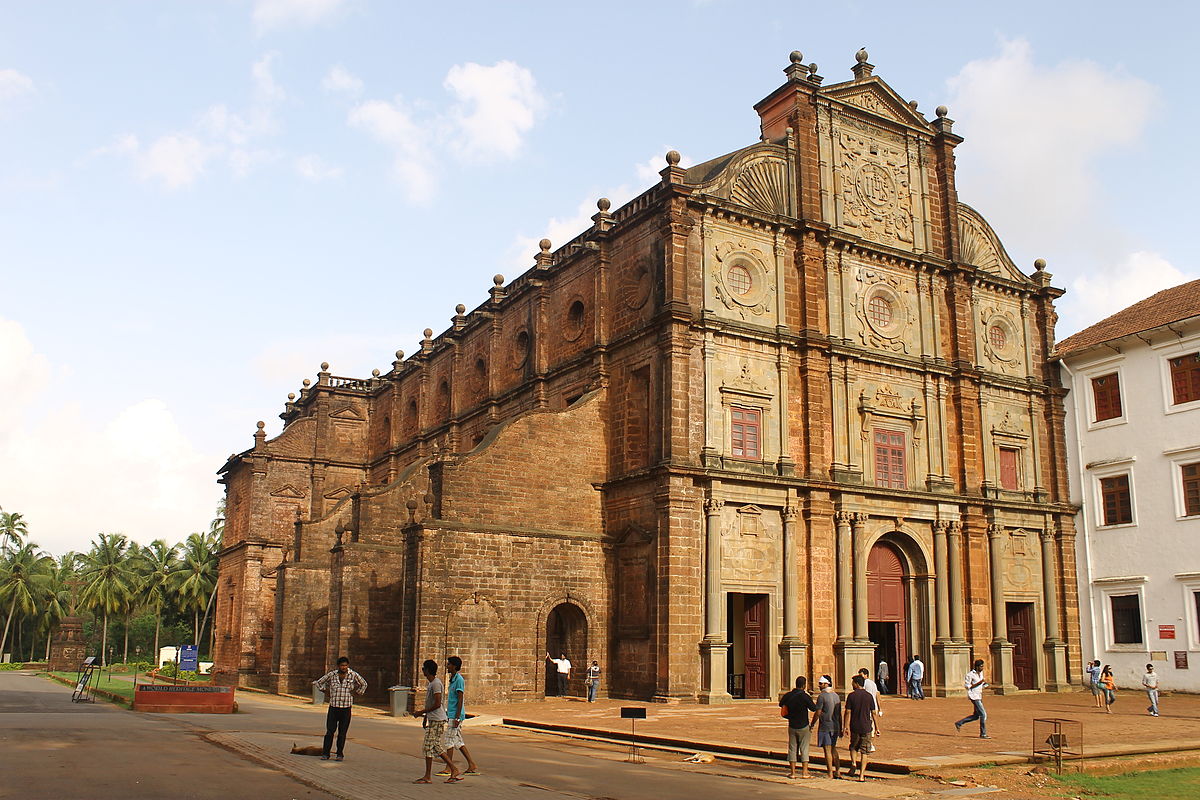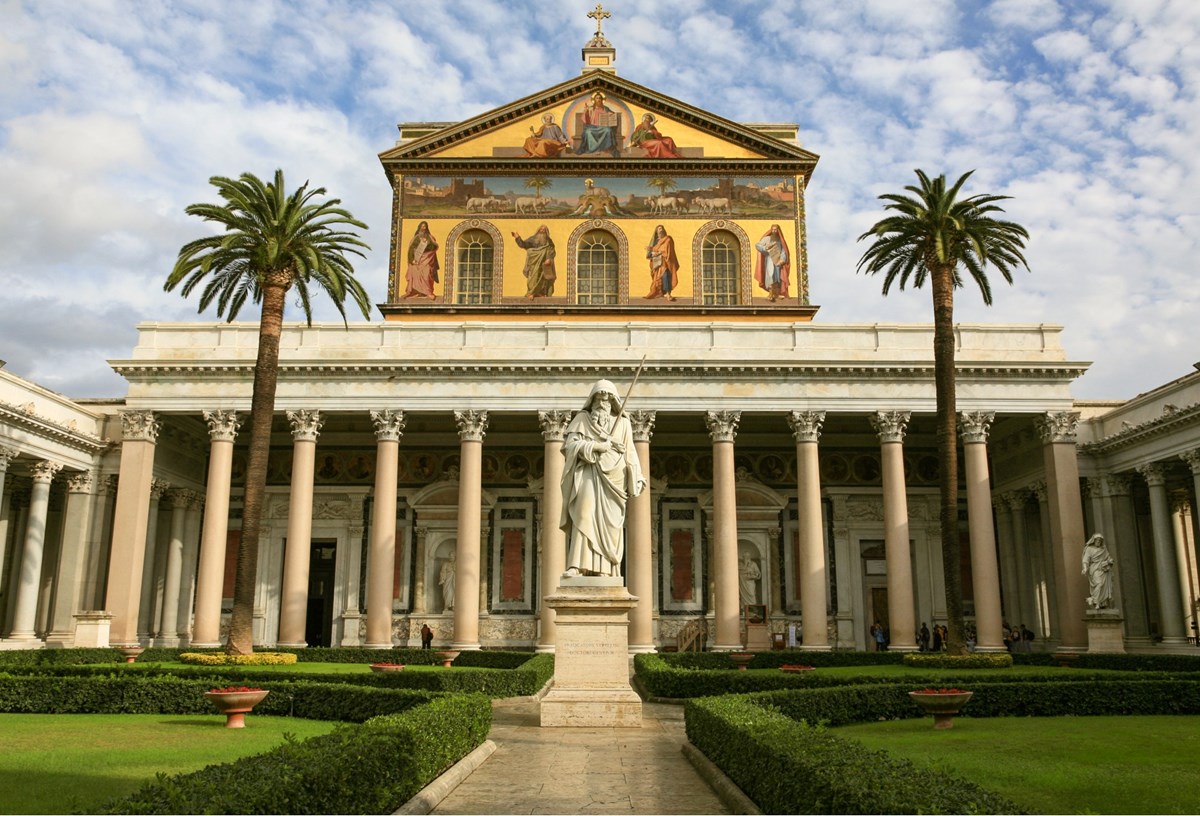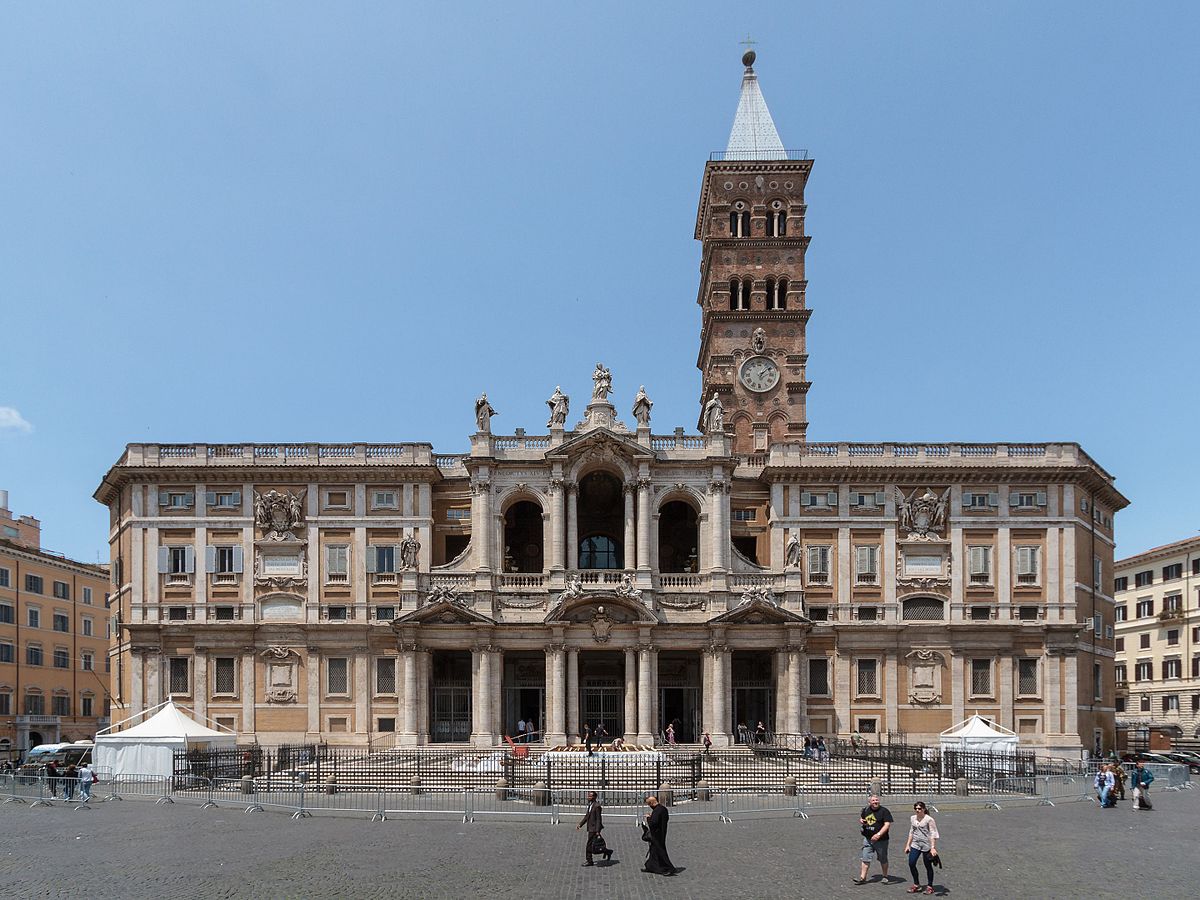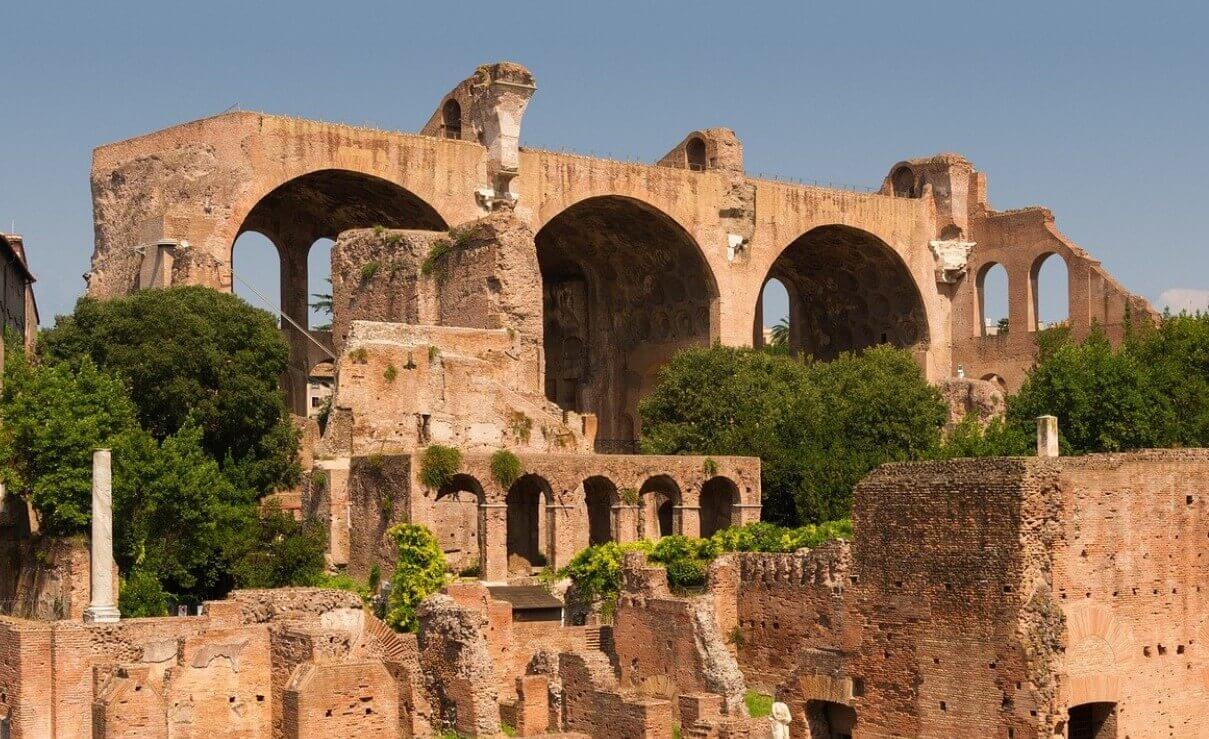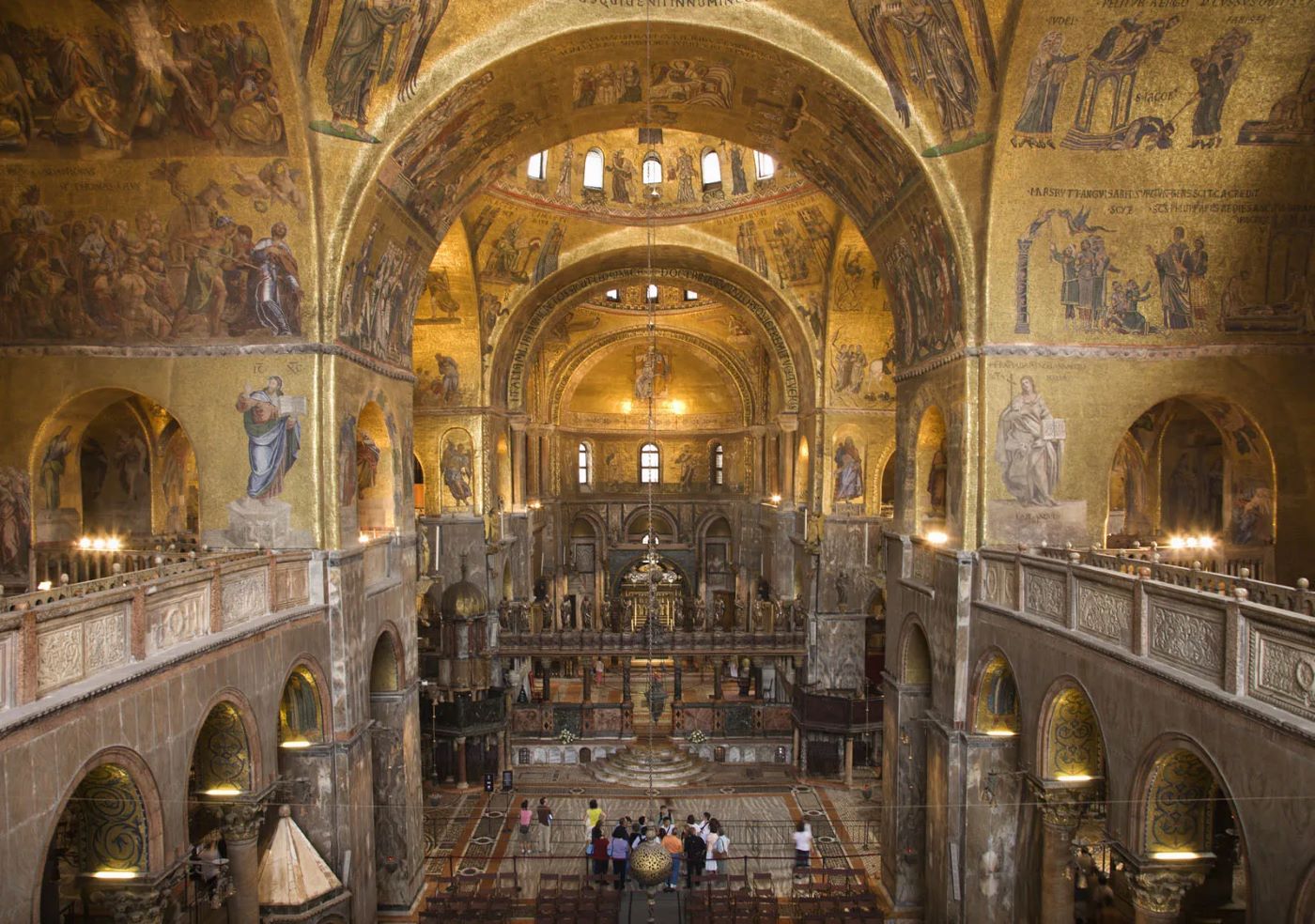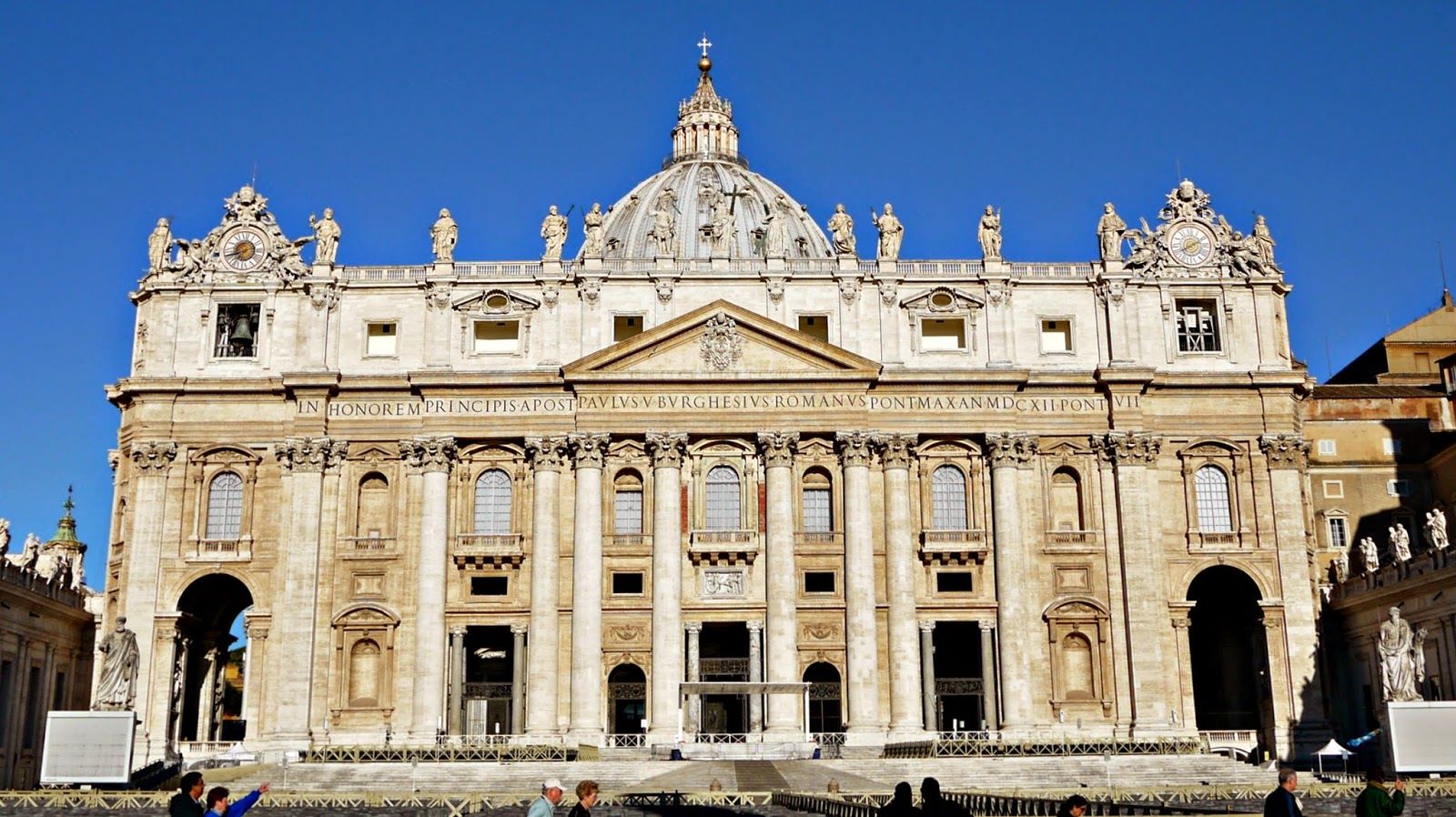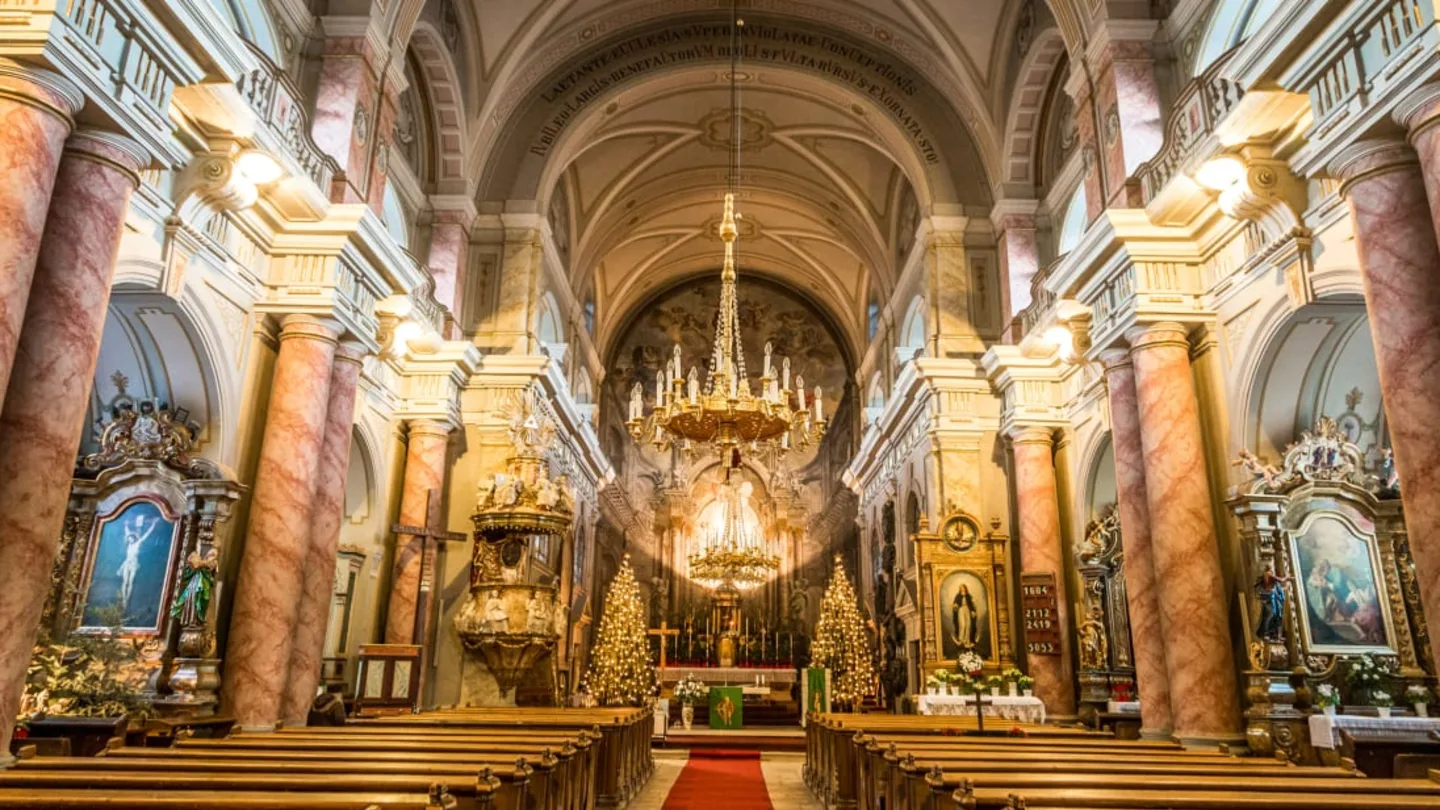Home>Arts and Culture>Where Is The Lateran Basilica


Arts and Culture
Where Is The Lateran Basilica
Published: February 10, 2024
Peter Smith, Editorial Director at Christian.net, combines deep insights into faith, politics, and culture to lead content creation that resonates widely. Awarded for his contributions to religious discourse, he previously headed a major organization for religious communicators, enhancing dialogue on faith's societal impacts.
Discover the rich history and cultural significance of the Lateran Basilica, a renowned arts and culture landmark in Rome. Explore its architectural marvels and religious heritage.
(Many of the links in this article redirect to a specific reviewed product. Your purchase of these products through affiliate links helps to generate commission for Christian.net, at no extra cost. Learn more)
Table of Contents
Introduction
The Lateran Basilica, also known as the Archbasilica of Saint John Lateran, holds a place of immense significance within the Catholic Church and the broader historical and cultural landscape. This ancient and awe-inspiring structure stands as a testament to centuries of religious devotion, architectural prowess, and the enduring influence of Christianity.
As the oldest and highest-ranking of the four major basilicas in Rome, the Lateran Basilica commands reverence and admiration from pilgrims, tourists, and scholars alike. Its rich history, remarkable architecture, and profound spiritual importance make it a focal point of exploration for those seeking to delve into the depths of religious and cultural heritage.
The Lateran Basilica's story is intertwined with the very fabric of Christianity, serving as a symbol of endurance and resilience through the trials and triumphs of the faith. From its early beginnings to its present-day significance, the basilica stands as a living testament to the evolution of religious expression and the enduring legacy of those who have contributed to its grandeur.
This article aims to provide a comprehensive exploration of the Lateran Basilica, delving into its historical roots, architectural splendor, and enduring significance. By embarking on this journey, readers will gain a deeper appreciation for the profound impact of this sacred site and the timeless allure it holds for visitors from around the world.
Read more: Where Is The Basilica Of The Annunciation
History of the Lateran Basilica
The history of the Lateran Basilica is a tapestry woven with threads of faith, resilience, and transformation. Its origins can be traced back to the early days of Christianity, making it one of the most historically significant religious sites in the world. The basilica's story begins in the 4th century when the Roman Emperor Constantine I, a pivotal figure in the history of Christianity, ordered the construction of a grand cathedral on the Lateran Hill in Rome. This monumental undertaking marked the establishment of the Lateran Basilica as the first official Christian church building in the city.
Throughout the centuries, the basilica bore witness to a myriad of historical events and underwent several periods of reconstruction and restoration. It weathered the storms of political upheaval, barbarian invasions, and the shifting tides of power, emerging as a symbol of unwavering faith and endurance. The Lateran Basilica also served as the residence of the popes for nearly a millennium, further solidifying its status as a cornerstone of the Catholic Church.
The architectural evolution of the basilica reflects the diverse influences and artistic styles that have shaped its identity over the centuries. From its early days as a grand cathedral to its Baroque-era embellishments, the Lateran Basilica stands as a living testament to the enduring legacy of architectural innovation and artistic expression.
In addition to its architectural significance, the Lateran Basilica holds immense spiritual and symbolic importance within the Catholic tradition. It has been the site of numerous ecumenical councils and papal ceremonies, further cementing its status as a focal point of religious authority and tradition.
Today, the Lateran Basilica stands as a beacon of faith and history, drawing pilgrims, scholars, and art enthusiasts to marvel at its timeless beauty and profound significance. Its rich and storied history continues to captivate the imagination and inspire awe, serving as a living testament to the enduring power of faith and the indelible mark of human creativity.
The history of the Lateran Basilica is a testament to the enduring legacy of faith, resilience, and architectural innovation. From its humble beginnings in the 4th century to its present-day status as a revered religious and cultural landmark, the basilica stands as a living testament to the enduring power of faith and the indelible mark of human creativity.
Architecture and Design
The architecture and design of the Lateran Basilica stand as a testament to the evolution of artistic expression and religious devotion throughout the centuries. From its early beginnings as a grand cathedral commissioned by Emperor Constantine I to its present-day splendor, the basilica's structural elements and ornate embellishments reflect a rich tapestry of architectural styles and historical influences.
The exterior of the basilica boasts a commanding presence, characterized by its imposing facade adorned with intricate sculptures and majestic columns. The grandeur of the basilica's exterior serves as a prelude to the awe-inspiring interior, where visitors are greeted by soaring ceilings, ornate frescoes, and majestic marble columns. The basilica's interior exudes a sense of timeless grandeur, inviting contemplation and reverence from all who enter.
One of the most striking features of the Lateran Basilica is its magnificent baldachin, a canopy-like structure that rises above the high altar. Crafted from precious metals and adorned with intricate designs, the baldachin serves as a focal point of the basilica's interior, drawing the gaze upward toward the heavens. This masterful work of artistry exemplifies the fusion of religious symbolism and architectural magnificence that defines the basilica's interior spaces.
The architectural evolution of the Lateran Basilica is also evident in its chapels, each offering a unique blend of artistic styles and historical narratives. From the ornate decorations of the Borghese Chapel to the serene beauty of the Baptistery, these sacred spaces provide a glimpse into the diverse influences that have shaped the basilica's design over the centuries.
The Lateran Basilica's architectural and design elements serve as a testament to the enduring legacy of artistic innovation and religious devotion. The interplay of light and shadow, the intricate detailing of sculptures and mosaics, and the harmonious balance of architectural proportions all contribute to the basilica's status as a masterpiece of human creativity and spiritual expression.
In exploring the architecture and design of the Lateran Basilica, one cannot help but be captivated by the seamless integration of artistic mastery and profound religious significance. The basilica stands as a living testament to the enduring power of architectural innovation and the timeless allure of sacred spaces, inviting visitors to embark on a journey through the annals of history and the heights of human creativity.
Importance and Significance
The Lateran Basilica holds profound importance and significance within the realms of religious, historical, and cultural heritage. As the oldest and highest-ranking of the four major basilicas in Rome, it stands as a symbol of enduring faith and spiritual authority within the Catholic Church. The basilica's historical significance is deeply rooted in its association with Emperor Constantine I, whose patronage led to its construction as the first official Christian church building in Rome. This pivotal moment marked the beginning of a new era for Christianity, solidifying the Lateran Basilica's status as a cornerstone of the faith.
Beyond its religious significance, the basilica also holds immense historical importance as the former residence of the popes. For nearly a millennium, the Lateran Basilica served as the principal papal residence and the focal point of ecclesiastical power. It was within the hallowed halls of the basilica that numerous papal ceremonies, councils, and historic events unfolded, shaping the course of religious and political history. The basilica's association with the papacy underscores its enduring influence and its role as a custodian of tradition and authority.
From an architectural and artistic standpoint, the Lateran Basilica stands as a masterpiece of human creativity and ingenuity. Its awe-inspiring design, adorned with intricate sculptures, majestic columns, and ornate frescoes, reflects the evolution of artistic expression across different historical periods. The basilica's interior spaces, with their soaring ceilings and masterful mosaics, serve as a testament to the enduring legacy of artistic innovation and religious devotion.
The Lateran Basilica's significance extends beyond the confines of the Catholic Church, resonating with visitors from all walks of life who seek to immerse themselves in the rich tapestry of history and culture. Its status as a UNESCO World Heritage Site further underscores its universal importance as a cultural treasure of humanity.
In essence, the Lateran Basilica stands as a living testament to the enduring power of faith, the indelible mark of human creativity, and the timeless allure of sacred spaces. Its importance and significance reverberate through the annals of history, inviting visitors to embark on a journey through the depths of religious devotion and the heights of architectural magnificence.
Current Status and Visiting Information
The Lateran Basilica stands today as a revered symbol of faith, history, and architectural splendor, welcoming visitors from across the globe to experience its timeless allure. As a living testament to centuries of religious devotion and artistic innovation, the basilica continues to hold a central place in the hearts of pilgrims, tourists, and scholars alike.
Visitors to the Lateran Basilica are greeted by a site of profound historical and cultural significance. The basilica's status as the oldest public church in Rome and its association with the papacy make it a must-see destination for those seeking to delve into the depths of religious heritage. Its designation as a UNESCO World Heritage Site further underscores its universal importance as a cultural treasure of humanity, drawing inquisitive minds and art enthusiasts to marvel at its enduring grandeur.
For those planning a visit to the Lateran Basilica, it is essential to consider the practical aspects of experiencing this iconic site. The basilica is located on the Lateran Hill, easily accessible via public transportation, and is open to visitors throughout the year. Upon entering the basilica, visitors are greeted by a majestic interior adorned with awe-inspiring frescoes, intricate mosaics, and a sense of sacred tranquility. The chapels within the basilica offer unique glimpses into the diverse artistic styles and historical narratives that have shaped its identity over the centuries.
Guided tours and informational resources are available to provide visitors with a deeper understanding of the basilica's historical, religious, and artistic significance. These resources offer invaluable insights into the rich tapestry of the basilica's past and its enduring influence on the cultural landscape.
In addition to its historical and cultural significance, the Lateran Basilica continues to serve as an active place of worship and pilgrimage, hosting religious ceremonies and events that further enrich its spiritual legacy. Visitors have the opportunity to witness the living traditions of the Catholic Church within the hallowed halls of the basilica, fostering a profound sense of connection to centuries of faith and devotion.
In summary, the current status of the Lateran Basilica as a revered cultural and religious landmark, coupled with the wealth of visiting information available to guests, ensures that a visit to this iconic site is an enriching and enlightening experience. As the basilica continues to stand as a beacon of faith and history, it invites visitors to embark on a journey through the annals of religious devotion and the heights of human creativity.
Read more: Where Is Sacré-Cœur Basilica
Conclusion
In conclusion, the Lateran Basilica stands as a timeless testament to the enduring power of faith, the indelible mark of human creativity, and the profound impact of religious and cultural heritage. From its humble beginnings in the 4th century to its present-day status as a revered cultural and religious landmark, the basilica has woven a rich tapestry of history, art, and spirituality that continues to captivate the hearts and minds of visitors from around the world.
The basilica's historical significance, rooted in its association with Emperor Constantine I and its status as the first official Christian church building in Rome, underscores its pivotal role in the evolution of Christianity. As the former residence of the popes and the site of numerous papal ceremonies and historic events, the basilica has left an indelible mark on the course of religious and political history, solidifying its status as a custodian of tradition and authority.
From an architectural and artistic standpoint, the basilica's design and embellishments reflect the diverse influences and styles that have shaped its identity over the centuries. Its awe-inspiring interior, adorned with soaring ceilings, intricate mosaics, and masterful sculptures, serves as a testament to the enduring legacy of artistic innovation and religious devotion.
The universal importance of the Lateran Basilica as a cultural treasure of humanity is further underscored by its designation as a UNESCO World Heritage Site, drawing visitors to immerse themselves in the rich tapestry of history and culture that it embodies. As an active place of worship and pilgrimage, the basilica continues to foster a profound sense of connection to centuries of faith and devotion, inviting visitors to witness the living traditions of the Catholic Church within its hallowed halls.
In essence, the Lateran Basilica stands as a living testament to the enduring power of faith, the indelible mark of human creativity, and the timeless allure of sacred spaces. Its profound importance and significance reverberate through the annals of history, inviting visitors to embark on a journey through the depths of religious devotion and the heights of architectural magnificence. As the basilica continues to stand as a beacon of faith and history, it serves as an enduring symbol of the enduring legacy of religious devotion and the timeless allure of sacred spaces.
